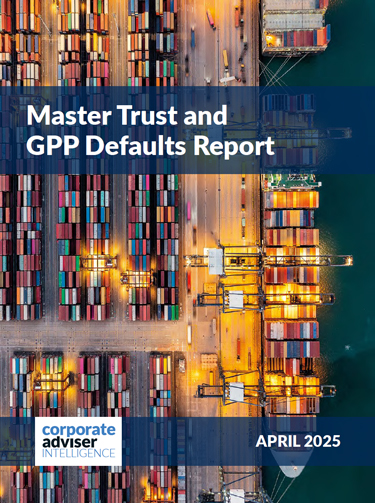[SPONSORED CONTENT]
A little planning goes a long way to boosting people’s financial positivity. Here’s how your clients can help members set up a 2025 savings plan that they’ll stick to all year round.
Insights from our Retirement Voice 2024 report reveal that spending time planning – even just a little – can make a big difference to how people feel about their finances. Just 30% of people who do no planning at all feel positive about their financial situation. This rises to almost half (48%) for those who do a bit of planning, and more than doubles for those who do a lot (68%).
In addition, planners are more confident making financial decisions than non-planners (84% vs. 51%). They appear less worried about their financial future too.
Most non-planners (61%) are worried they’re not saving enough now for when they’re older, compared to just 38% of those who plan a lot.
Despite the big benefits, our research shows that the majority of people (75%) do little to no planning.
Many members could be in the same boat and missing out on the advantages that planning can bring.
Your clients are in a great position help members get started with making a savings plan, and in turn helping them engage more with their day-to-day and future finances. As a result, this could help members feel more positive and less stressed, which could lead to a happier and more productive workforce.
Here are some ideas for members to kickstart their savings plans:
Set savings goals for today and tomorrow
A good starting point is for members to think about what they want their money to do for them. This means setting some short-, medium-, and long-term savings goals, which can provide some much-needed structure.
When thinking about the short term, members may want to consider what financial commitments or events are coming up in the next few months or couple of years. For example, paying off a credit card, setting up a rainy-day fund, or saving for a holiday.
For the medium term, members can look ahead at what might be happening in the next two to five years. This could be saving up for a house deposit or reviewing any expiring mortgage deals. And for the long term – the next five to ten years and beyond – the goal may be to reduce working hours, retire, or travel the world.
Wherever members are at, it’s always a good idea for them to work out what their savings goals are. Once they know what they’re aiming for, it can give them motivation to manage their money well to achieve those goals.
There are lots of tools and resources available that can help members set savings goals, such as MoneyHelper. This provides tools to help people understand their spending, as well as calculators to help them spot savings opportunities.
If your clients are with Standard Life for their workplace pension scheme, members can also use Money Mindset* to help them get to know their money better and build healthy savings habits.
Do a paperwork detox
A lot of people probably have a drawer at home full of forgotten financial paperwork.
If members can relate to this (and it’s likely some of them will!) it’s important they brave the drawer and start detoxing that paperwork. If it’s left to pile up, it could become a barrier to action if they don’t know where to find the right information.
Once they’ve gathered everything together, it’s a good idea for members to find a financial filing system that works for them. Doing so means that whenever they get new documents, such as insurance certificates or pension statements, they’ll know exactly where to find them.
These days, most documents are sent by email or accessed online. Members could think about setting up folders and creating regular back-ups for online files, and then have lever arch files for any paper-based documents they receive.
Create a budget
Once members have set their savings goals and sorted out their paperwork, now’s a good time to start setting up a budget.
Doing so can help members see how much money they’ve got coming in and going out each month, and if they’ve got anything left over to save towards their financial goals.
To get started, they could break down their monthly spending into three areas – everyday essential costs such as mortgage or rent, bills, and food shopping; any debt including credit cards, loan repayments, or car finance; and leisure spending such as going out for dinner, getting takeaways, or buying clothes.
Members can use online budgeting tools such as MoneyHelper to help them categorise their spending.
In addition, Standard Life workplace pension scheme members can use Money Mindset* to help them see what’s going out and coming in. It allows them to connect all their financial accounts – including bank accounts, mortgage, credit cards, and pension – to get a real-time view of their whole financial world.
Whatever tools members use, getting a clearer view of their spending could help them spot any areas they could cut back on, and if they could put this money away towards a savings goal instead. Small things like reducing the daily takeaway coffee to a once a week treat, and putting that money into a rainy-day fund, for instance, could make a big difference over time.
We based this article on our recent ‘Make a 2025 savings plan’ Good Money Moods webinar. Members can catch up and watch on demand here. To find out more about our webinars and how they help power-up members’ financial knowledge, visit our Good Money Moods page.
*Money Mindset is provided in partnership with Moneyhub Financial Technology Limited
Phoenix Life Limited, trading as Standard Life, is registered in England and Wales (1016269) at 1 Wythall Green Way, Wythall, Birmingham, B47 6WG.
Phoenix Life Limited is authorised by the Prudential Regulation Authority and regulated by the Financial Conduct Authority and the Prudential Regulation Authority.
Phoenix Life Limited uses the Standard Life brand, name and logo, under licence from Phoenix Group Management Services Limited.
© 2025 Phoenix Group Management Services Limited. All rights reserved.





